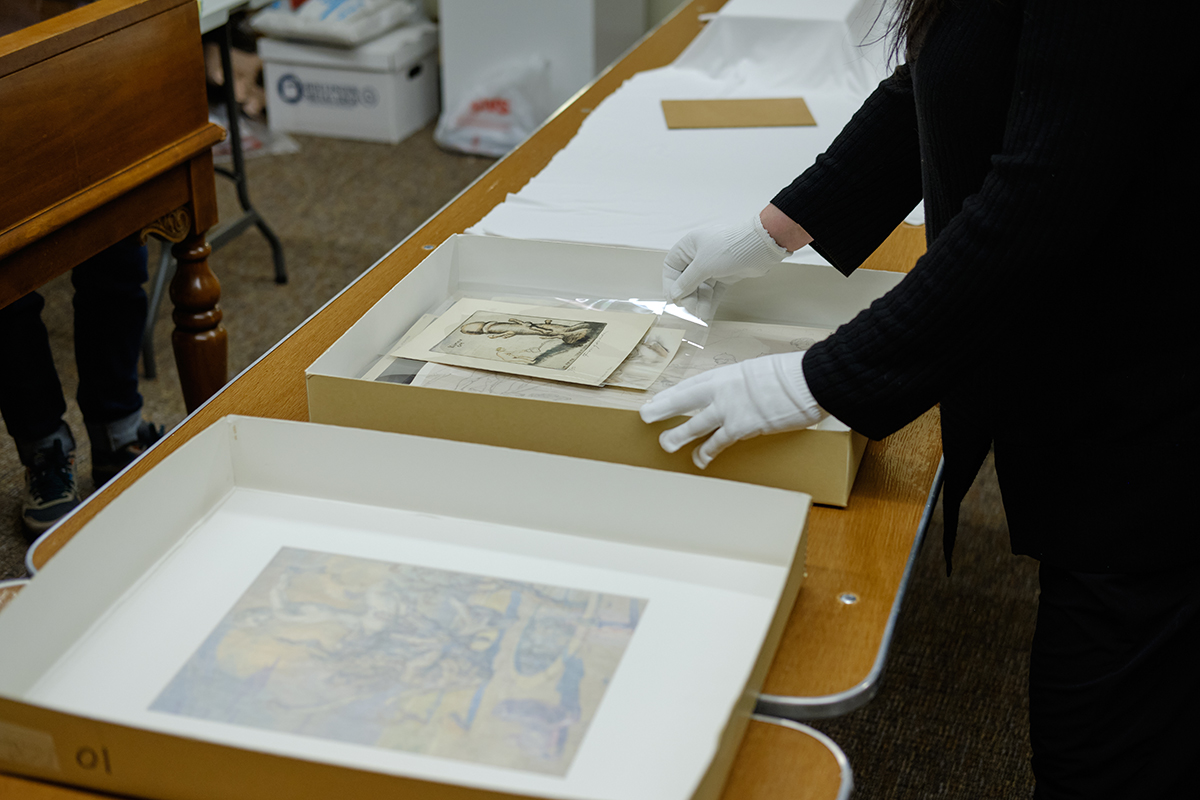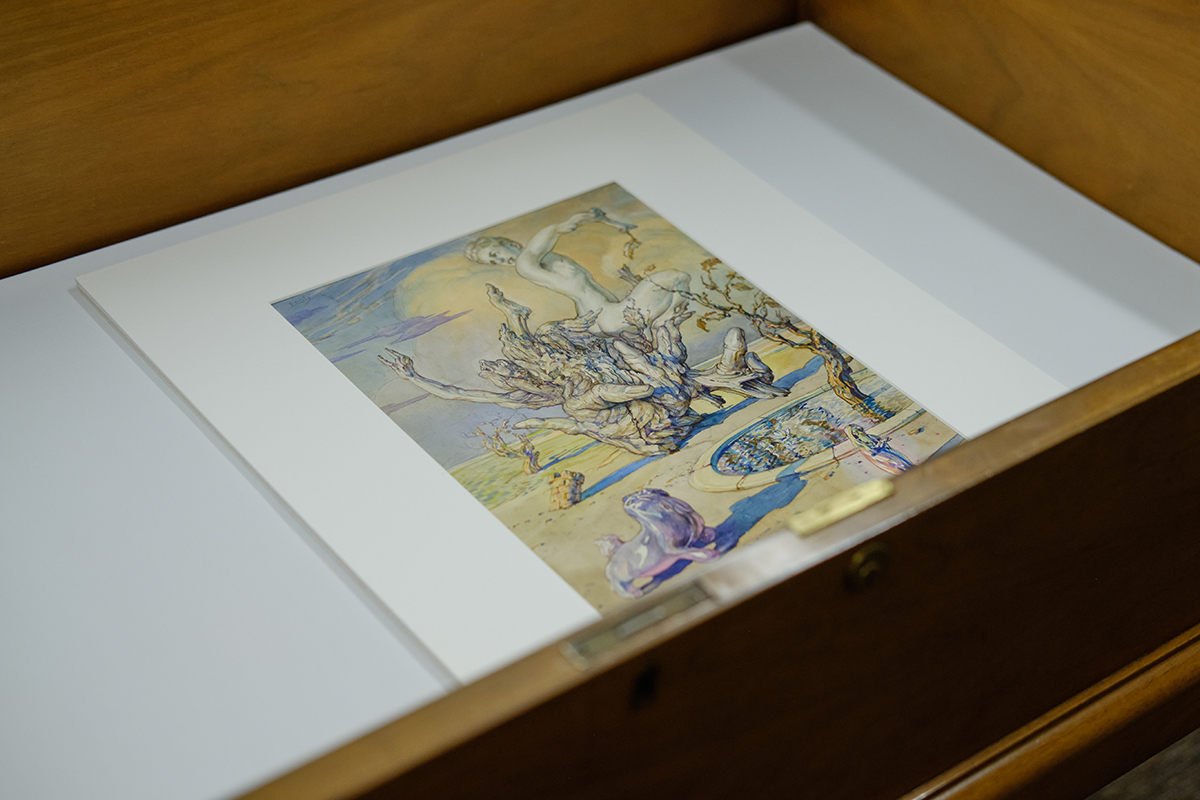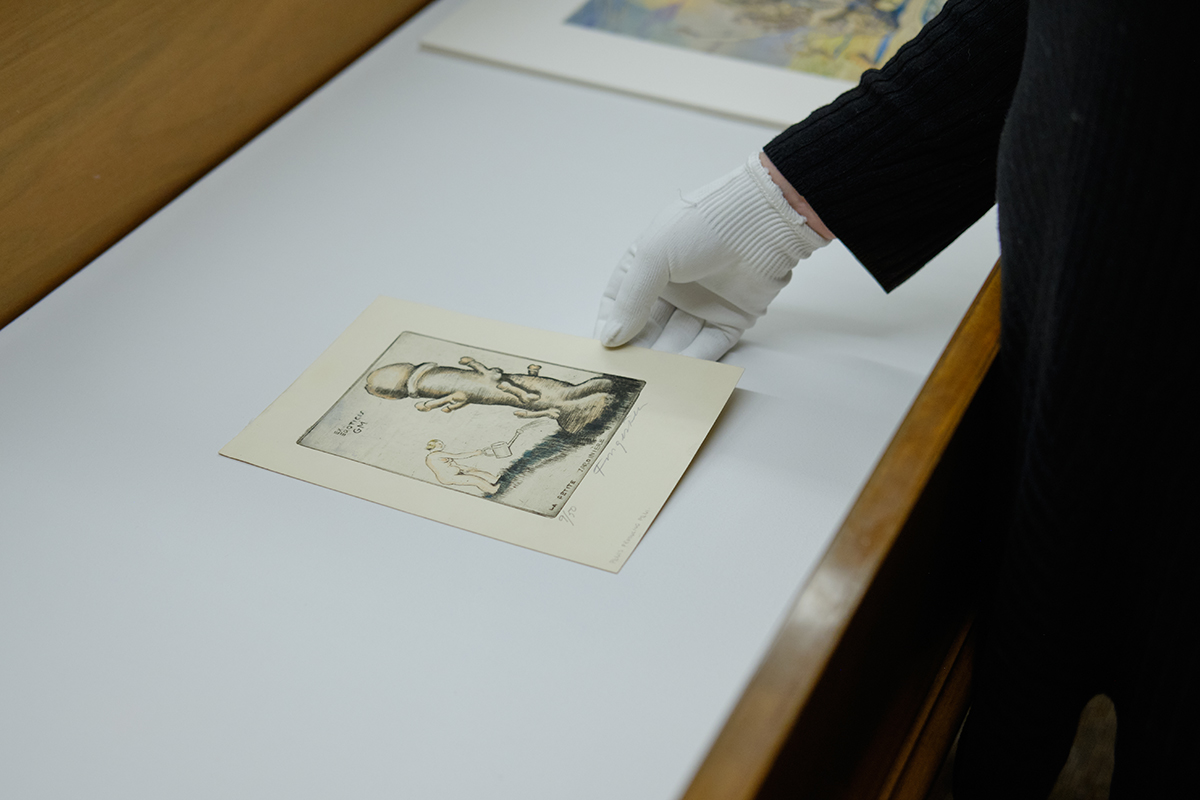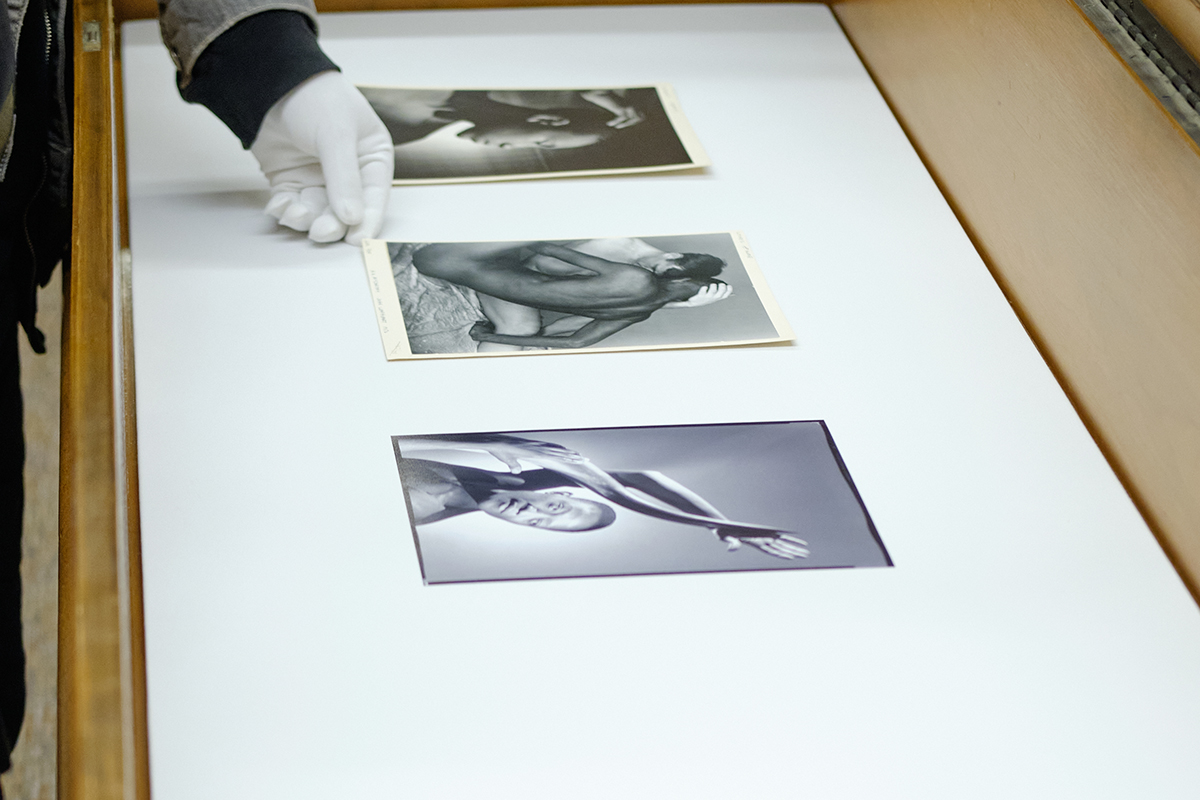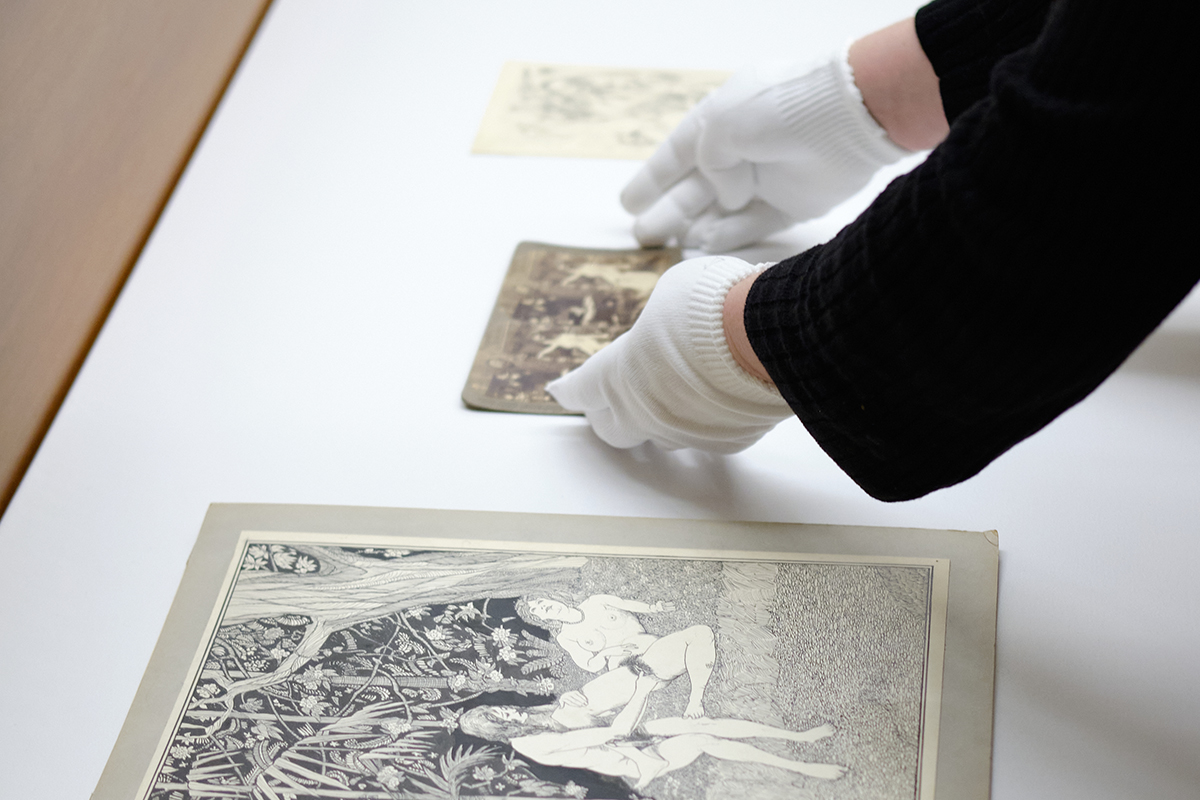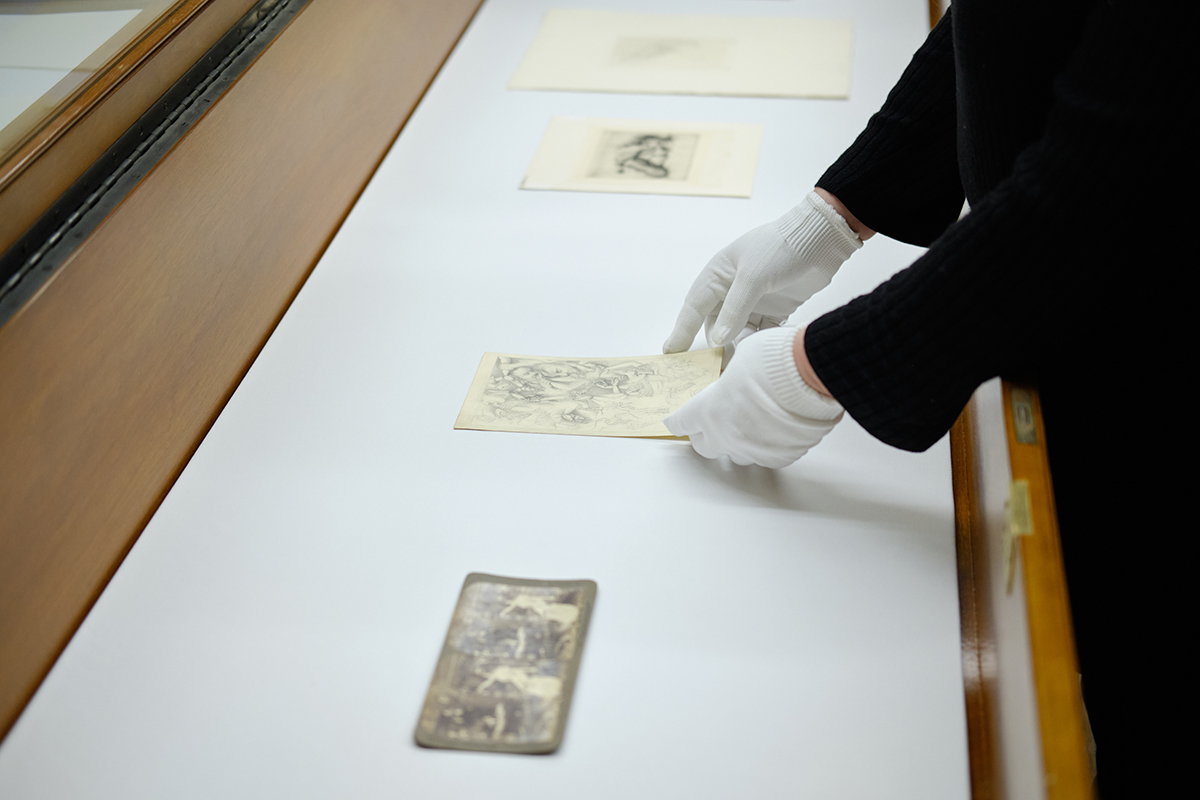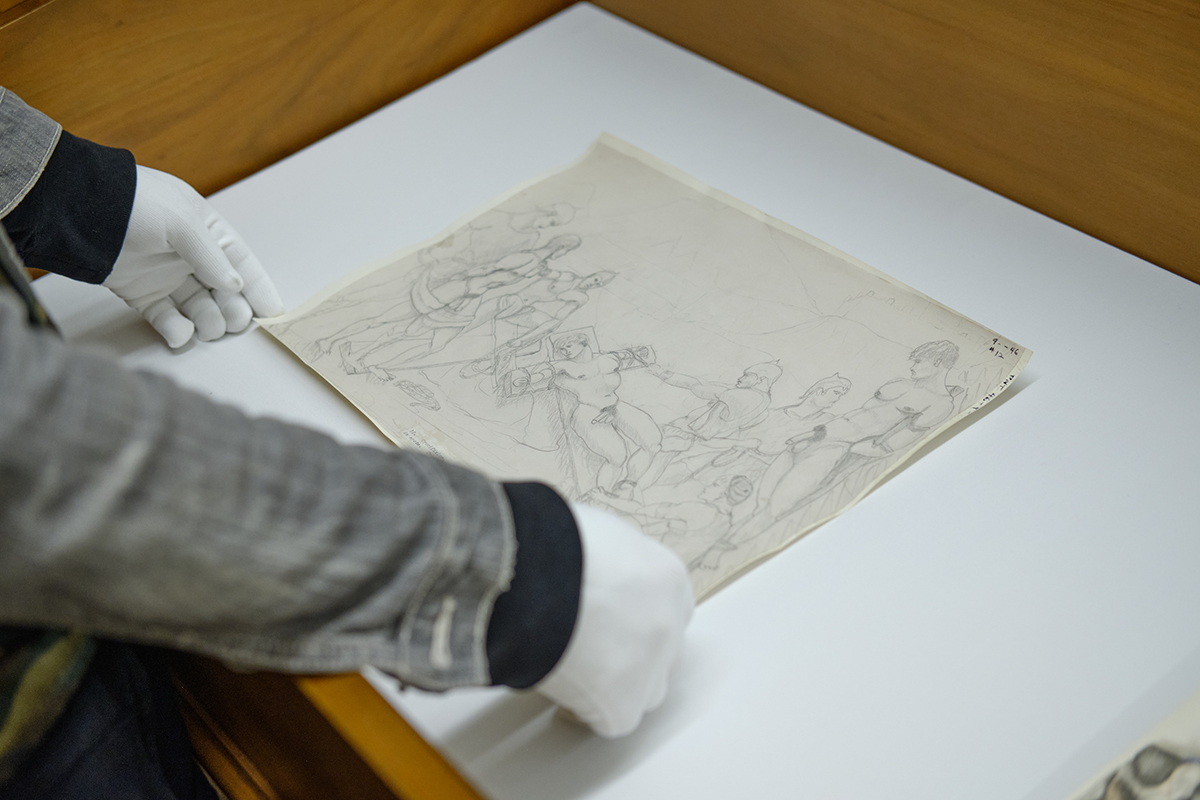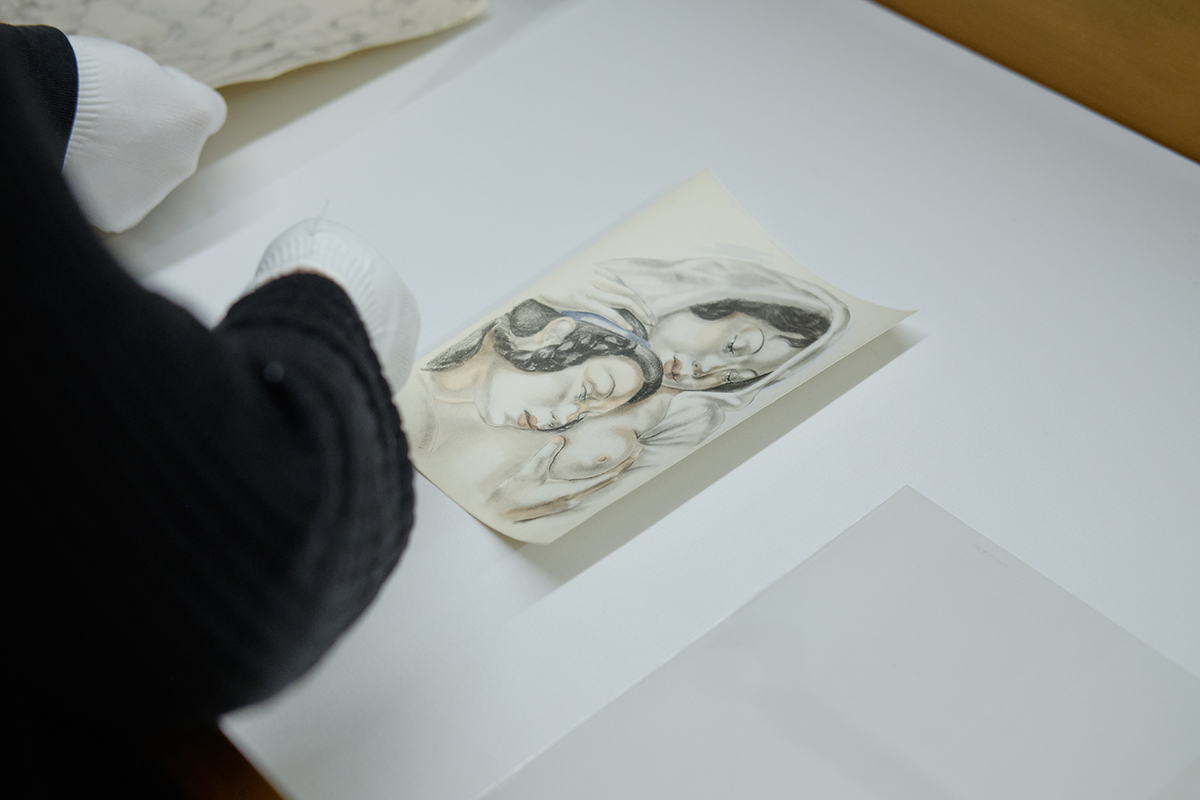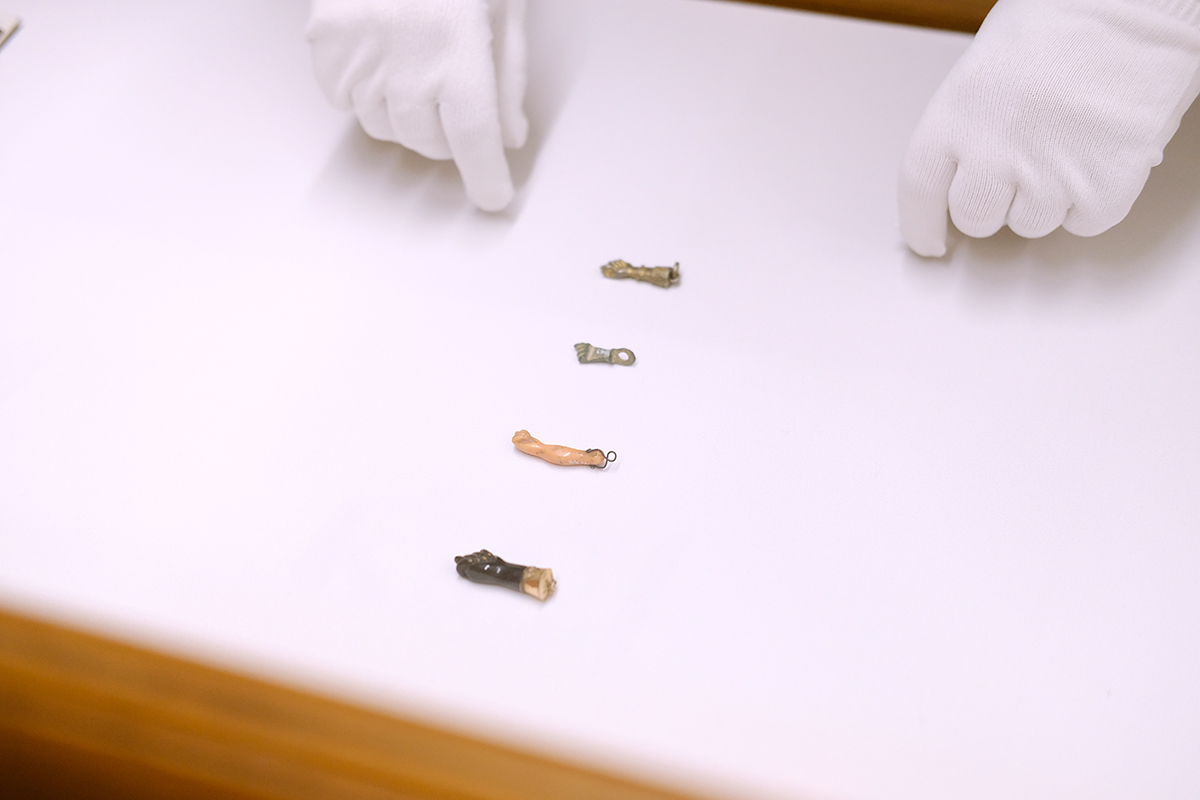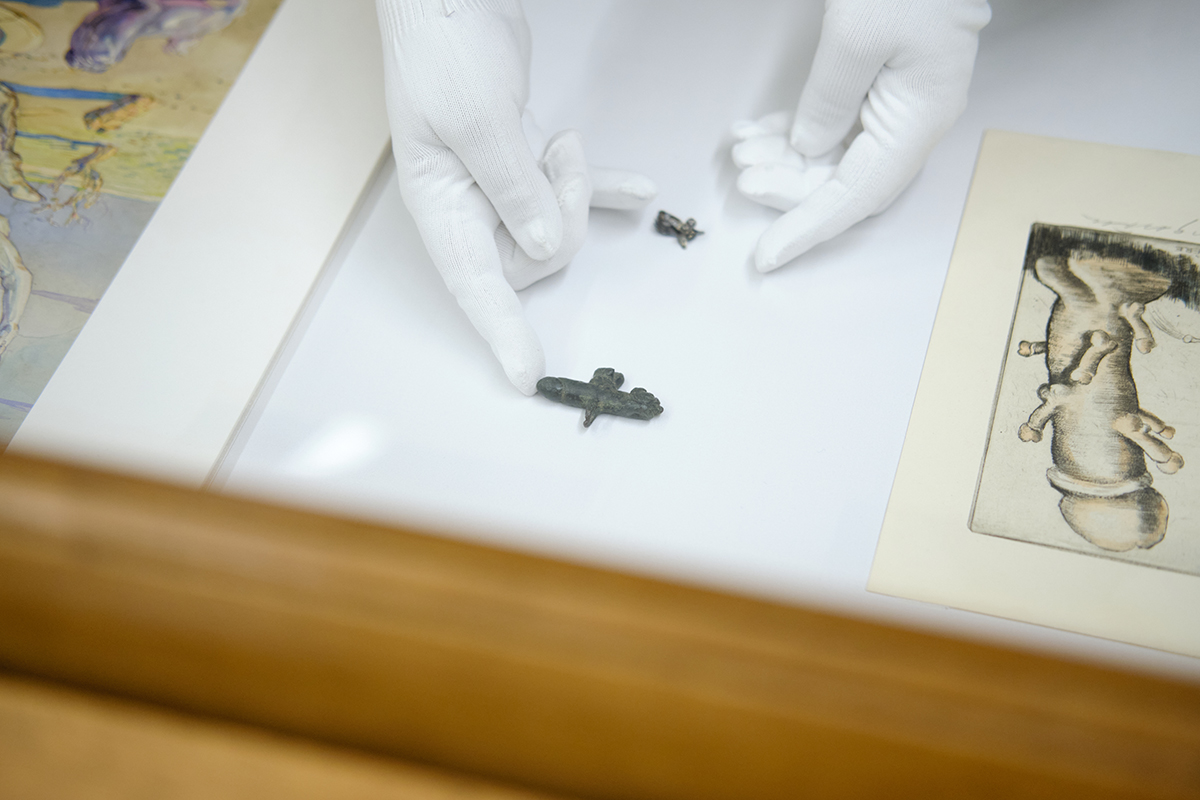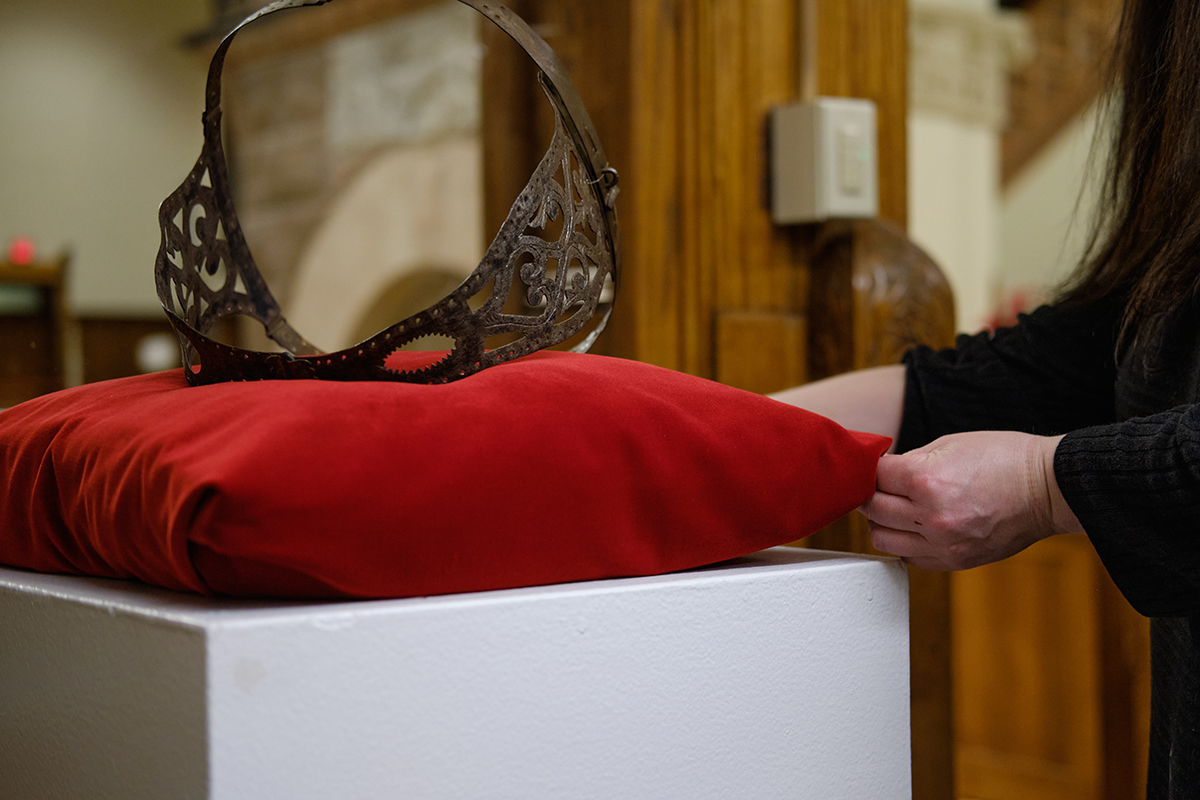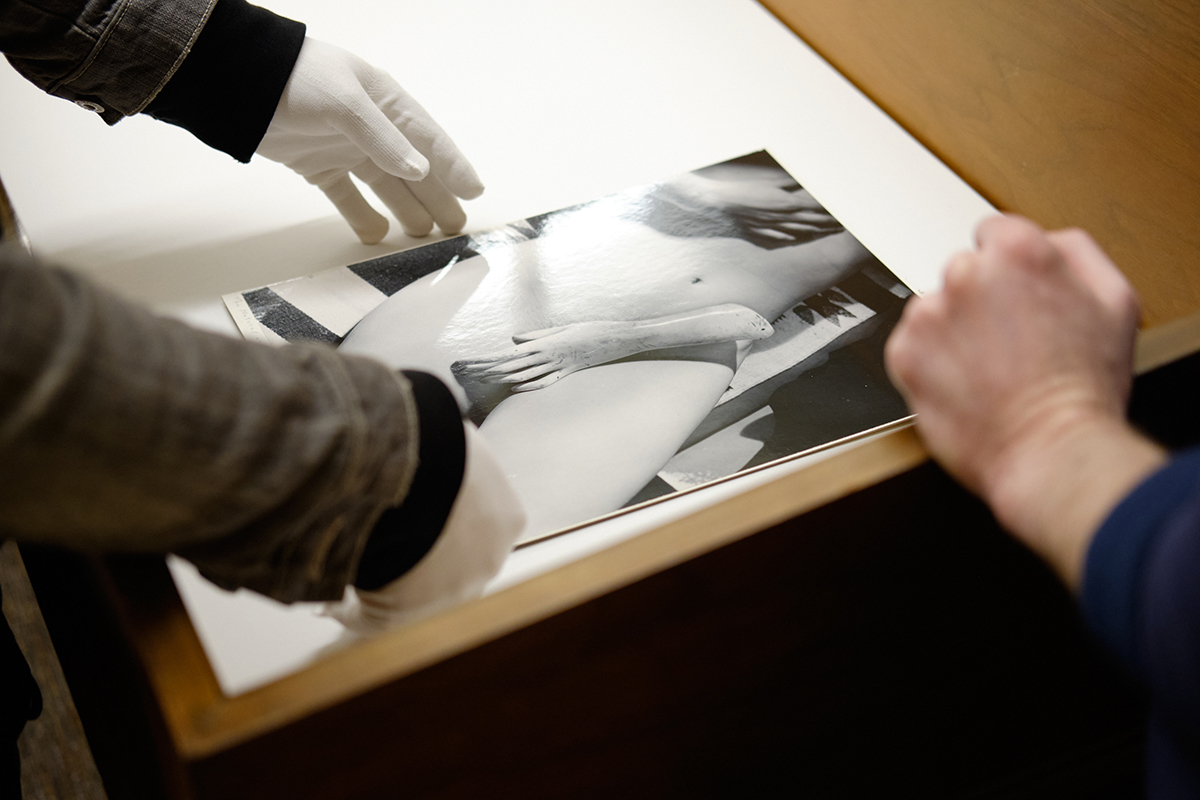SUPPLICATIONS
An exhibition of work from the Kinsey Institute for Research in Sex, Gender, and Reproduction. Curated by Jeremy Biles, Ryan M. Pfeiffer, and Rebecca Walz. "Supplications" was on display from February 3 to March 3, 2023 in the 100-suite of the Gayle Karch Cook Center in Maxwell Hall, as an adjacent exhibition to "Noli Me Tangere (Touch Me Not)."
Stranger Hands
When two hands touch, there is a sensuality of the flesh, an exchange of warmth, a feeling of pressure, of presence, of proximity of otherness that brings the other nearly as close as oneself. Perhaps closer. And if the two hands belong to one person, might this not enliven an uncanny sense of the otherness of the self, a literal holding oneself at a distance in the sensation of contact, the greeting of the stranger within? So much happens in a touch: an infinity of others—other beings, other spaces, other times—[is] aroused.
—Karen Barad, “On Touching—The Inhuman That Therefore I Am”
Supplicate: to plead, to ask earnestly, even desperately: an expression of longing, of desire: a plea and a prayer for pleasure, whether murmured with hands enfolded in fervency or cried out with hands reaching in entreaty.
A supplication expresses a desire to be pleased, and thus a desire for pleasure. Indeed, “supplicate” shares a Latin root with “pleasure”: placare, to please. But the desire of supplication is double, or so this exhibition proposes. For a supplication expresses an excessive desire not only for oneself—Please grant my request!—but also a desire to please and to pleasure another.
This selection of works from the Kinsey Institute conceives and imagines supplication as involving an erotic desire for self-directed pleasure as well as a desire for and on behalf of the other—a desire, that is, for the stranger’s pleasure and for the pleasure of the stranger. A desire, in other words, to touch the stranger, including the stranger within the self—the otherness occulted within each of us.
On display here are images spanning many centuries (from ancient eras to the contemporary moment) and multiple modes: scientific illustration, evidentiary photography, amulets and other artifacts, as well as “fine art” in a variety of mediums, from bronze, stone, coral, and metal sculpture to painting and photography. But whatever their mediums, it is drawing in its many aspects that connects these varied works.
One might consider, for instance, the history of drawing as a preparatory medium in connection with erotic forepleasure—preparation for the sexual act. One might think of lines inscribed on paper in close analogy to a finger caressing the flesh of the beloved. One might further ponder the way in which the hand that renders a fantasy contacts the other within the self, even as it grants pleasure to the stranger who beholds the intimate image that emerges.
In drawing, the artist’s hand, relinquished from purposive labor, is free to play, explore, experiment. In drawing, the hand fantasizes, touching dreams and desires. In drawing, the hand gives birth to other hands, to the other’s hands, to strangers’ hands and to ever stranger hands.
So it should come as no surprise that the hand—whether appearing within a scientific illustration, or as an erotic object, or as the appendage rendering images of desire—is so prominent in these works. One finds hands seeking the other in touching the self. One encounters hands serving as erotic metonyms for the body, variously reaching, grasping, caressing, binding, releasing, holding, probing, penetrating, withdrawing—but always seeking the touch of the other, always longing to please the other—a desire whose fervency accedes to the level of prayer.
Thus the erotics of the hand converges with the sacred in supplication. And if indeed there prevails in supplication a double movement, you may expect that some of the images in this exhibition will reach you as simultaneously intimate and strange, stimulating waves of attraction and repulsion. For such dynamics, tensions, ambivalences, and oscillations constitute the alternating current of eroticism itself. In erotic love, one’s hands and one’s touch become ever stranger, even as strange hands become more intimate, thereby further enflaming desire.
This infinitely doubling desire is the supplication that murmurs throughout this exhibition: a plea for intimacy, a prayer for ever stranger hands. ♦
